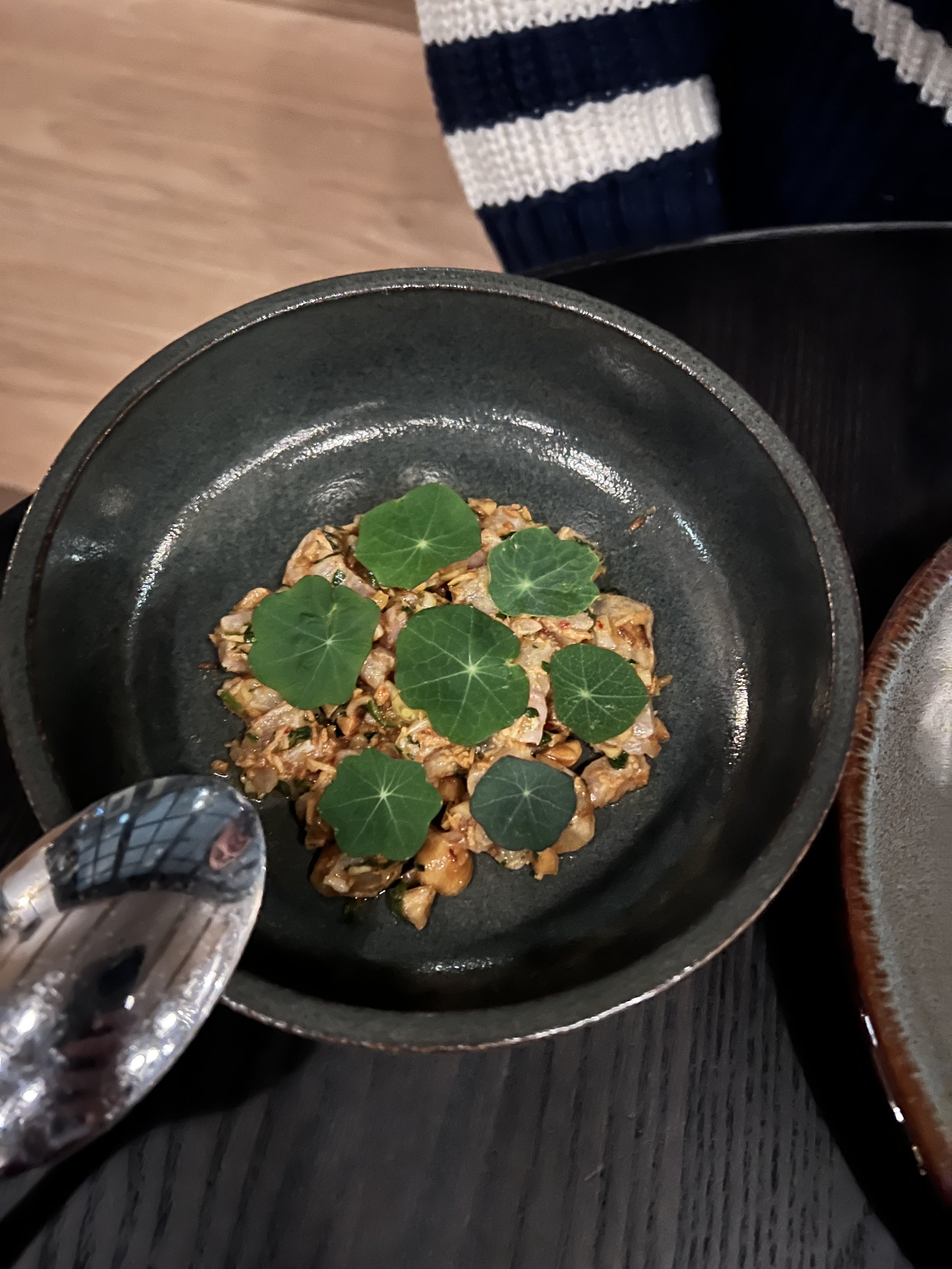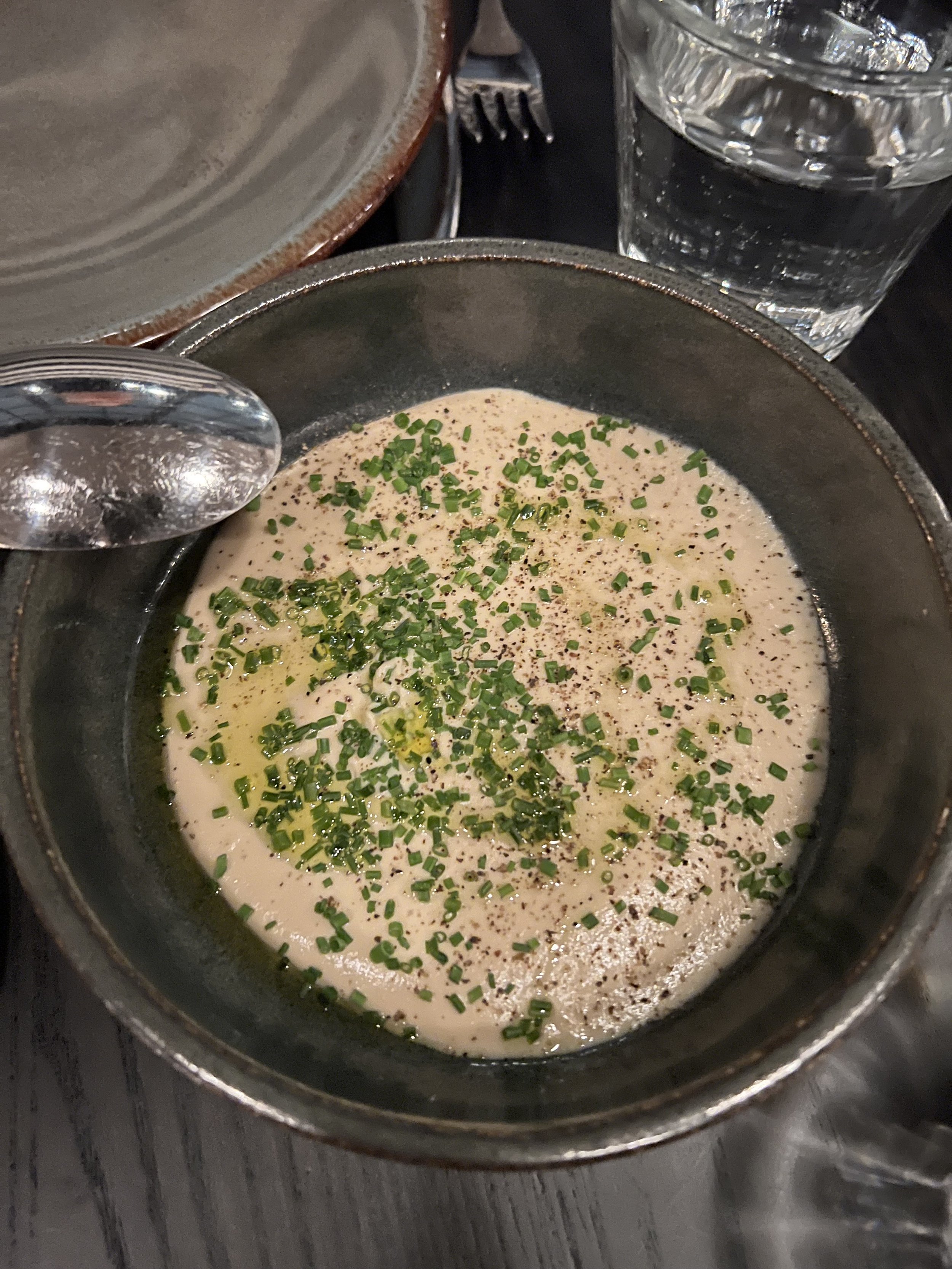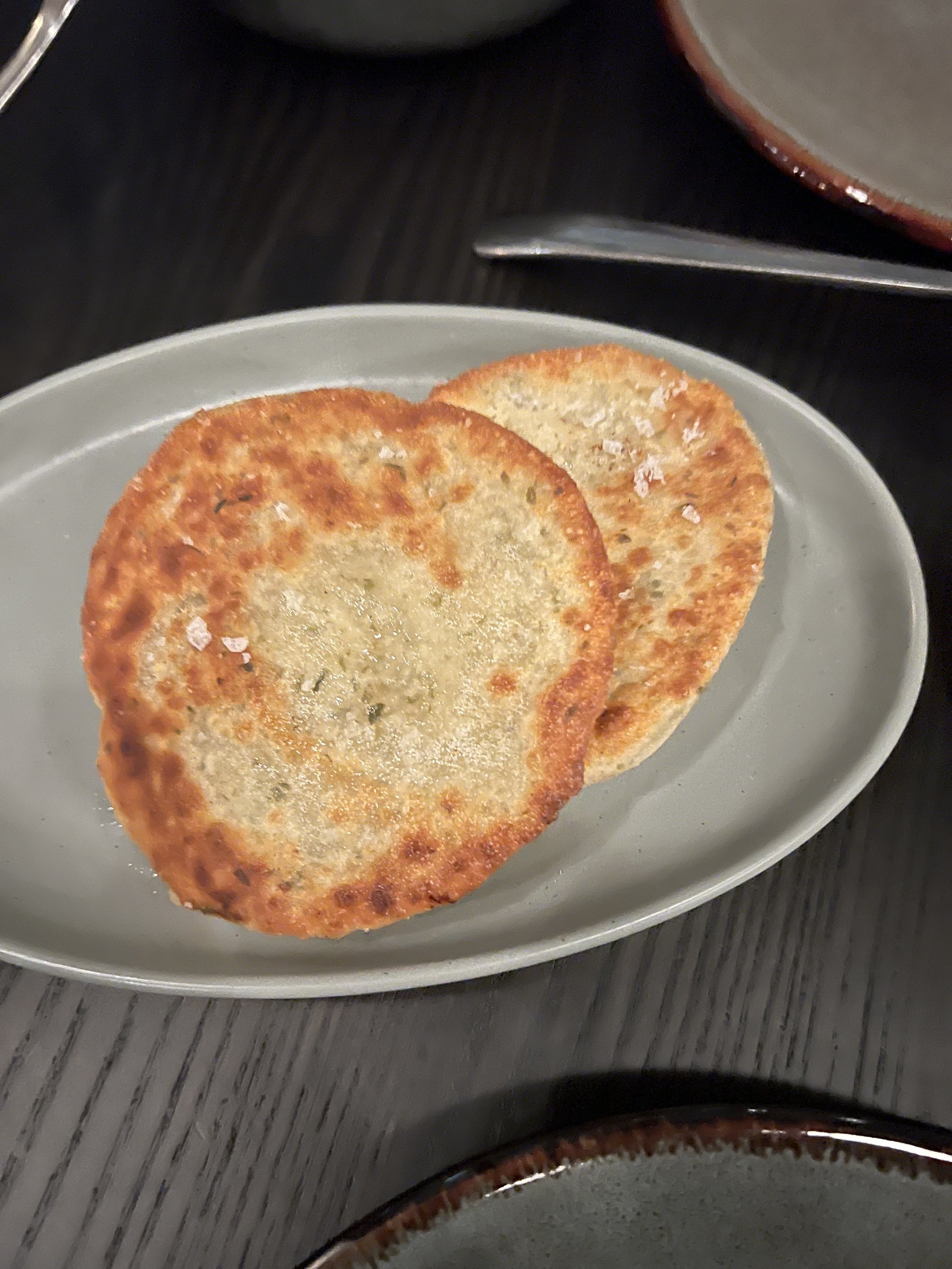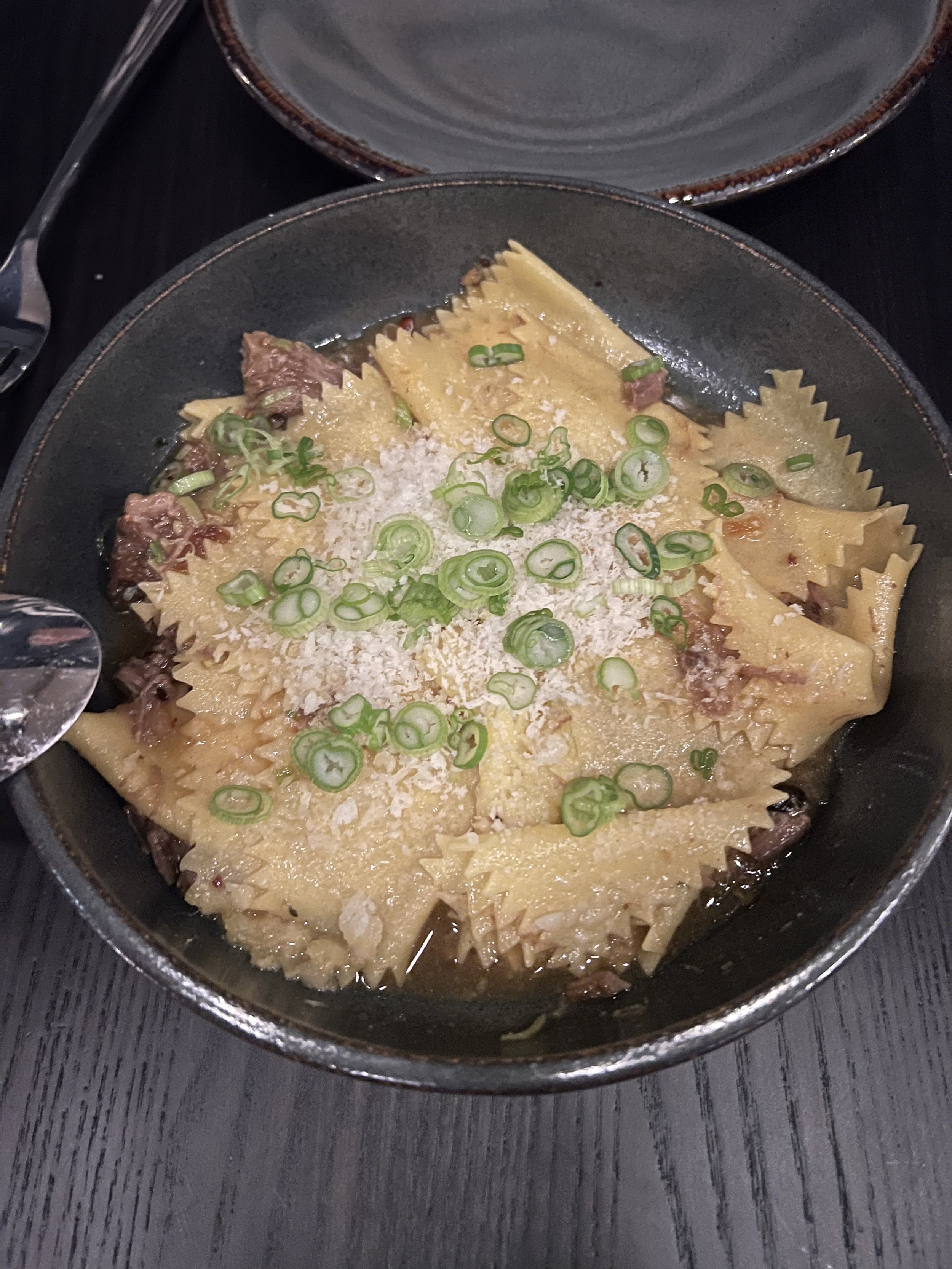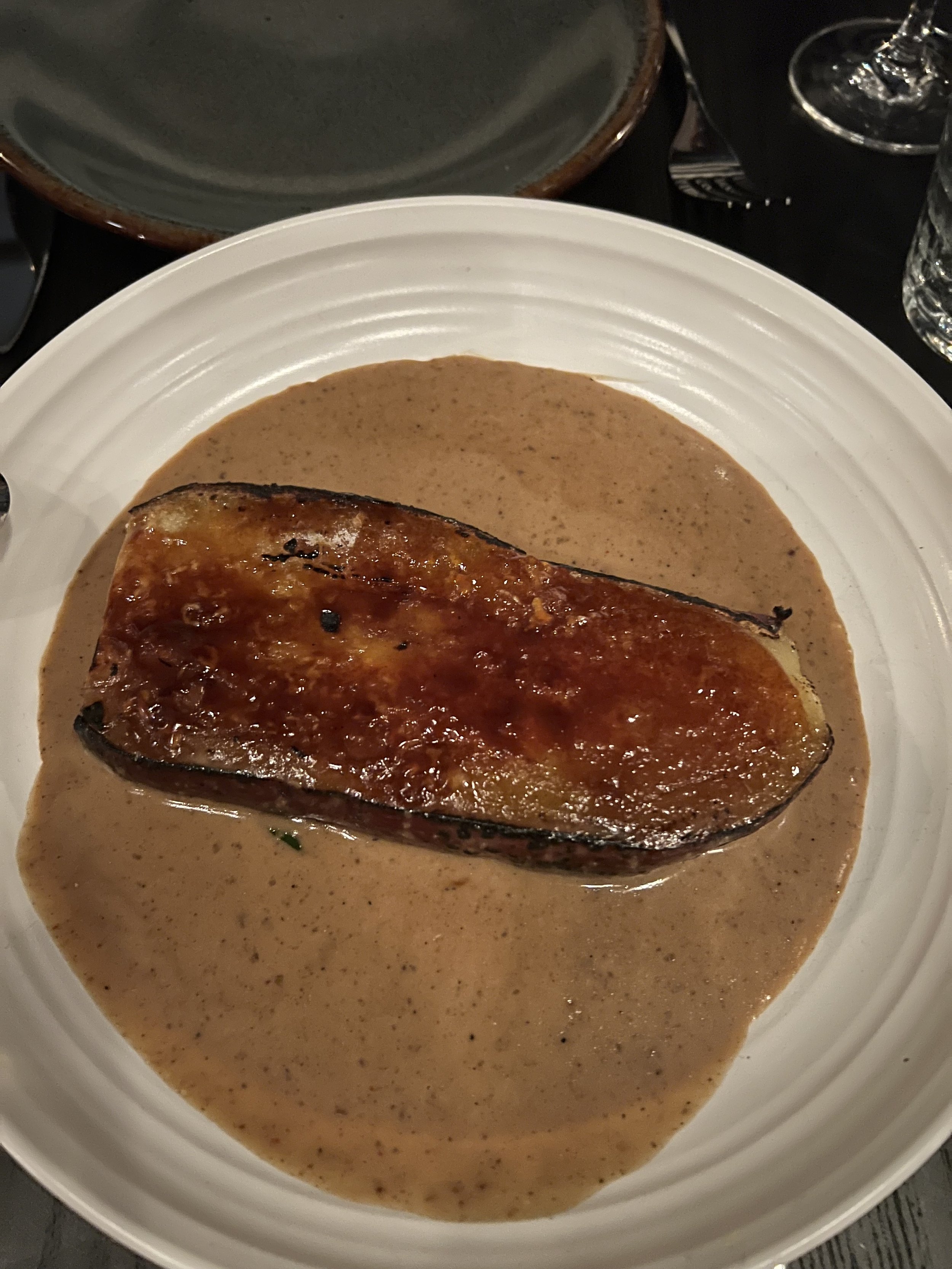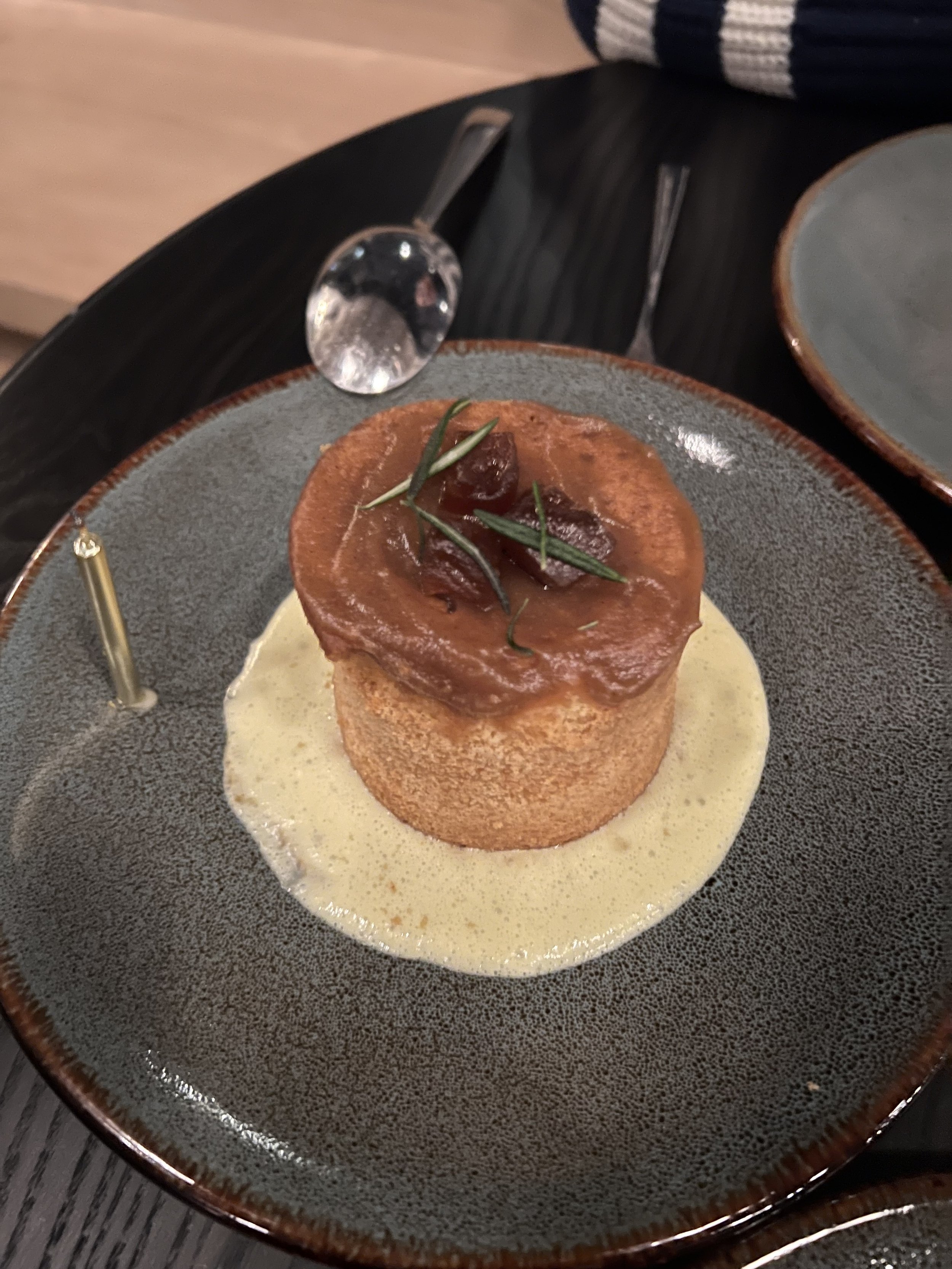Review: Maxwells Trading is Chicago's Best New Restaurant
Estimated reading time: 5.5 minutes (1075 words)
When Pacific Standard Time announced that it was permanently closing three years ago, I considered it one of Chicago’s most significant Covid restaurant casualties. It had only been open for three years but received a significant amount of media attention and did good business. In my 2018 review, I gave it three stars and it impressed at every visit.
[Read The New Chicagoan’s review of Pacific Standard Time]
So, when PST chef Erling Wu-Bower and business partner Josh Tilden announced the imminent opening of Maxwells Trading early this year I was excited to try it, if not a little perplexed. Unlike PST, Maxwells defies categorization. But much like PST, the food leaving the kitchen is exciting and dialed in.
In a prior feature at Eater, Wu-Bower expressed that with this new restaurant he won’t be in the kitchen as often as he used to and would try his hand at more front-of-house responsibilities. But it was still surprising when my wife and I walked in recently to be greeted by Wu-Bower and have him take our coats to be checked. Indeed, throughout the evening we observed him zigging and zagging his way through the spacious dining room, checking on tables, seating new arrivals, and switching the music on the restaurant’s record player.
Maxwells Trading is technically located in the West Loop, but it sits west even of Ogden Avenue and just one block east of Ashland; perhaps Far West Loop is more appropriate. In any case, the space that the restaurant took over is very large and very open — I counted just one pillar in the main dining room, which seats around 50 to 60 people, with more room available near the front door and at the bar. But despite the lack of walls, Maxwells maintains a very casual ambiance that leans into the area and the building’s industrial past. Warm wood and soft brick make up most, if not all, of the decor.
To start, we both ordered the only sparkling wine that was offered by the glass at a reasonable $13 each. We were encouraged to put in our whole food order at once, so we ordered the Suzuki tartare, French onion dip, fazzoletti, Japanese sweet potato, half chicken a la brasa, and the Basque butter cake for dessert.
The tartare and dip came out first and delivered a sneak peek at the meal to come. Both dishes were fairly small — shareable only among two or three people — but came in large on flavor. The Suzuki (seabass) was diced small but had bright, refreshing tones like lemongrass and a slight hint of heat. Even on a cold winter evening, it was a lively chilled dish.
The French onion dip was similarly enlivening. Served with two pieces of soft “griddled bread,” it tasted precisely as described: a spreadable, deeply oniony version of French onion soup. The bread was excellent as well but it tended to overwhelm the dip; tasting the spread on its own revealed how complex it actually was.
Next up was the fazzoletti, or pasta squares with shredded lamb. In some ways, this was the most surprising dish of the evening, in close competition with the Japanese sweet potato (more on that below). The noodles themselves were clearly made in-house, and most likely made the same day based on their chew and give. They were tissue-paper thin but numerous. The lamb was braised, and while described as “spicy” on the menu with a “chili crunch,” I did not pick up any heat; the tartare was hotter in that regard. Nonetheless, it was what I would have expected from Wu-Bower: focused, well-made, and Asian influenced.
The star of the meal was by far the Japanese sweet potato. The dish is not too much more complex than its name. A thick slice of a perfectly roasted (you guessed it) Japanese sweet potato is served on a bed of northern style Thai curry sauce (think peanut buttery panang curry) and basil leaves. The potato itself was brûléed to form a crunchy, sugary crust much like the dessert would be. Beyond the curry underneath, the potato was also possibly seasoned with five spice powder; at minimum, anise was noticeable. This dish was so unique and unexpected, and executed so well, that I could dine at Maxwells every day and only order the sweet potato.
Lastly, but by no means least, was the chicken a la brasa with black eyed peas and ginger-scallion salsa verde. This was a surprising dish too, not as much because of the flavors, but because of how succulent the chicken was. I assumed it was cooked sous vide because of its wall-to-wall moisture and crispy skin, but upon asking our waitress to confirm, I was informed that it was cooked in the reverse sear method and finished on the grill. The black eyed peas were good but a little gratuitous, and there could have been more salsa verde, but the dish got the job done as an entree and it joined the clean plate club.
Maxwells excels almost everywhere on the menu save for dessert. There were only three options available — a stark departure from Pacific Standard Time, which was proud to host pastry chef Natalie Saban, formerly of Michelin-starred Grace. We ordered the Basque butter cake which came out warm and gooey on the inside and was served with miso caramel and a base of sabayon. Like the rest of the meal, it was excellent, but it didn’t quite reach the high notes set by the pasta and the sweet potato. If anything at Maxwells needs some attention it is the dessert menu.
Despite these shortcomings, if they can even be called that, Maxwells Trading has come out of the gate swinging. It has been previously described as “difficult to classify,” and while that’s not incorrect, it’s not right, either. There is no overarching theme like there was at PST. But there is a thread running through anyway, namely, heartfelt dishes elevated by refined technique. Every dish is designed with thought and care. It comes across as food that Wu-Bower would like to eat, regardless of what others may think. Asian influence is also felt throughout, interpreted through a local lens; “Asia by way of Argyle” comes to mind as a descriptor. It more than adequately fills the hole left behind when PST closed.
However Maxwells is classified, one thing is certain: it is Chicago’s best new restaurant.
Left to right: Suzuki tartare, French onion dip, griddled bread, fazzoletti, Japanese sweet potato, half chicken a la brasa, Basque butter cake
Details
Stars: Three (out of four)
Price: $$ ½ (out of four)
Style: New American with Asian influence
Atmosphere: Industrial, minimalist, thoughtful
Location:
1516 W Carroll Ave
Chicago, IL 60607
Website:
https://www.maxwellstrading.com/
Star guide: one - poor, not worth time or money; two - mediocre, worth a visit on occasion; three - very good yet with issues; four - exceptional quality
Price guide: $ - cheap; $$ - affordable; $$$ - special occasion; $$$$ - rare opportunity


